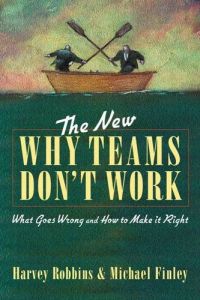Join getAbstract to access the summary!

Join getAbstract to access the summary!
Michael Finley and Harvey Robbins
The NEW Why Teams Don't Work
What Goes Wrong, And How To Make It Right
Berrett-Koehler, 2000
What's inside?
Team management: Dealing with dysfunction.
Recommendation
Of teams and families it might be said, "Each is dysfunctional in its own special way." Today’s corporate litany states that to succeed we must learn to cooperate more closely. The testing ground for this idea becomes trendy "cross-functional teams" or task forces. Here, antisocial tendencies and hidden agendas are sprinkled across meeting-room tables like dragon’s teeth, springing up to mortally wound the best interests of your organization. The good news is that you can do something to help your organization’s teams operate more effectively. Robbins and Finley are a couple of skilled veterans who say that "trust is the blood of teams." If you believe better teamwork is critical to your company’s future, getabstract.com thinks you will find the lessons in this book absolutely essential - whether you’re a member of a team or the leader who serves them.
Summary
About the Authors
Harvey Robbins has served as a team trainer for some 20 years with companies such as Honeywell, 3M, IDS and Southern Companies. Mike Finley is a long-time collaborator with The Masters Forum, the executive education program based in the Twin Cities area of Minnesota.



















Comment on this summary